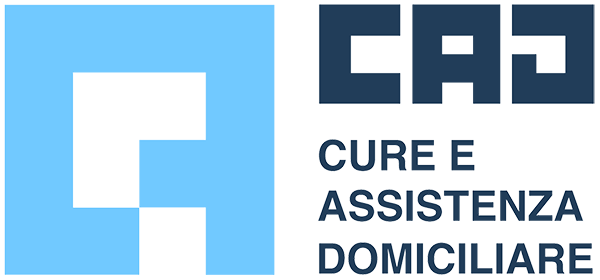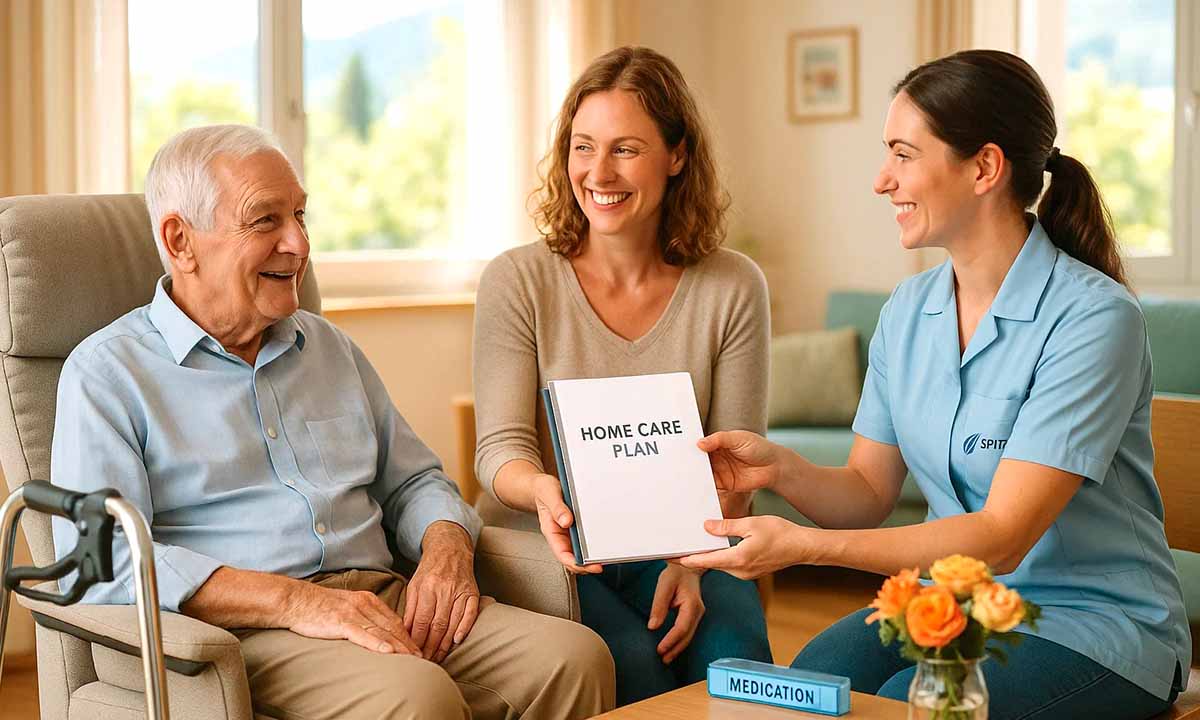The moment of discharge from hospital: preparing for care and rehabilitation at home
Leaving the hospital after surgery or hospitalization for an acute illness is a delicate moment. Patients and their families often feel a little lost: in the hospital, there was continuous care, but at home, they suddenly have to manage medications, wounds, and check-ups.
Post-hospital home care planning serves precisely to bridge this gap and ensure continuity of care. Ideally, planning begins before the patient leaves the hospital. In Swiss hospitals, there are discharge planners or discharge nurses whose job is to organize the patient’s return home or transfer to another facility. The aim is to support the patient, anticipating their needs at home and ensuring that those who will be taking care of them (family members, Spitex, family doctor) are prepared.
Pre-discharge needs assessment for managing post-hospitalization home care.
Before the patient returns home, the hospital team should carry out a comprehensive assessment.
Let’s look at the key areas of assessment for post-discharge care:
- Level of independence: what is their current level of independence?
- Need for aids: are they able to walk unaided, or will they need aids such as a walker or wheelchair?
- Ability to perform daily activities: can they wash and dress independently, or will they need help from a family member or caregiver?
- Specific therapies required: do they need injections, IVs, rehabilitation, or other activities that require healthcare personnel at home?
- Follow-up visits and transportation: what follow-up appointments or tests will they need, and how will they get there?
All of these questions are part of the planning process.
Practical example of convalescence management:
An elderly person is discharged after pneumonia, but is still weak. Arrangements will be made for Spitex to visit daily to help with personal hygiene and monitor vital signs, and perhaps for a physical therapist to visit the home for strengthening exercises.
The discharge nurse often draws up a nursing discharge form, a document summarizing the entire hospital stay (diagnosis, procedures performed, treatment, current needs) and post-hospitalization instructions. This document is given to the home care service and the patient/family so that everyone knows exactly what to do. In Italy, there is the concept of “protected discharge,” defined as an individualized plan drawn up before the patient leaves the hospital. In Switzerland, the principle is similar, although the term may vary.
Find out more about tele-assistance and telemonitoring tools
Coordination with local services for post-hospital care
Collaboration between a family doctor and Spitex
A key step is to involve the attending physician (family doctor). Before discharge, hospital doctors inform them, often by means of a discharge letter or even a phone call if necessary. The family doctor usually takes over the care once the patient is at home. In Ticino, as elsewhere, the rule is that home nursing services (e.g., medication, injections, hygiene in case of incapacity) are reimbursed by basic insurance according to the service catalog.
Therefore, the Spitex request is already prepared in the hospital: the hospital doctor can fill out a form or contact a home care service and arrange for it to be activated on the day of discharge.
Example of a Spitex request
“The patient will be discharged on May 10 and requires: abdominal wound dressing three times a week, monitoring of vital signs and weight twice a week, assistance with personal hygiene for two weeks, monitoring of therapy and weekly INR management…”
The home care service – public or private – then schedules the visits. In Ticino, public Spitex services are mostly organized by district, but as we know, there are many recognized private operators (now over 60 Spitex): you need to choose or contact the right one.
The hospital often asks the patient/family if they already use a service (e.g., some already have a private nurse or a Spitex reference). If not, a service tailored to their needs is suggested.
The Spitex request that accompanies hospital discharge, therefore contains:
- frequency of visits
- type of care required (medication, monitoring of vital signs, hygiene, etc.)
- expected duration of care, therapy, and check-ups.
The choice of Spitex takes into account:
- the patient’s preferences
- any referral services already used
- specific clinical needs
Adapting the home environment for the discharged patient
Medical aids, equipment, and habitability
Planning the return home also means making sure the home is ready. Is a hospital bed with an anti-bedsores mattress needed? Does a handrail need to be installed in the bathroom or a toilet seat raiser?
A good planner will make sure that everything is in place when the patient arrives home: aids and equipment ready to use.
For example, if a patient returns with a stoma (intestinal bag), the stoma nurse will have already taught them how to manage it in the hospital and will have ordered the necessary supplies for home.
Another essential element to consider is habitability: will the patient be able to climb the stairs at home? If not, alternative solutions must be considered, such as a temporary bed on the ground floor or a stair lift if long-term. All of this is part of the “to-do list” for discharge.
Involvement and health education of patients and caregivers for post-discharge care
Involvement in managing specialist care and recovery of skills at home
Whether it is a post-operative discharge or following another complex situation, an often overlooked aspect is the health education of the patient and family members before discharge.
Understanding and knowing how to manage one’s condition is crucial to avoiding complications. Article 27 of the Nursing Code of Ethics (in Italy) states that nurses must ensure continuity of care by contributing to the network and information tools. In practice, nurses in hospitals must educate patients on what they will need to do at home.
Training and support materials for therapeutic education
From wound care to recognizing warning signs to rehabilitation. Let’s look at some concrete examples that illustrate how patients and family members or caregivers should be prepared before returning home.
Teaching patients to measure their blood sugar and administer insulin on their own, or instructing family members on how to change a urinary bag. The groundwork should be laid a few days before discharge so that patients have time to clarify any doubts.
Written sheets with instructions (e.g., diet to follow, exercises to do, warning signs to call the doctor about) are often provided. This information is essential to avoid complications and early readmission.
Teaching hip surgery patients how to exercise and move correctly prevents falls or dislocations; explaining to a family member how to monitor the surgical wound and what to report prevents a local infection from becoming septicemia because it was ignored.
“Therapeutic education plays a crucial role: teaching patients how to manage certain issues and training them in the use of devices (from simple glucometers to home ventilators) is essential to avoid complications and early readmission to hospital.”
This concept, highlighted in the literature, is very practical: a patient who knows their illness and knows what to do becomes an active part of their care and will not passively undergo events.
Caregiver support and social network after hospital discharge
If the patient is not self-sufficient, who will take care of them at home? Planning must absolutely consider the presence or absence of a caregiver. Assessing the presence of a family caregiver and their ability is crucial. If there is an elderly spouse who is also frail, professional help may be needed, such as a home care assistant for a few hours a day.
If there is no one at home, it may be risky to send the person home alone. In such cases, alternatives should be explored, such as a short stay in a nursing home (temporary accommodation) or hiring caregivers to cover more hours during the day.
Planning also means informing the family of their rights and options: in Ticino, for example, family caregivers can take time off work (up to 10 days per year to care for a relative in the event of acute illness) and receive financial support or advice (Pro Senectute, Pro Infirmis, etc.). Providing these contacts is part of good discharge planning: for example, the canton’s Advice and Guidance for Older People office can help put you in touch with home care services or day centers. It is also useful to mention the existence of therapeutic day centers (where the patient can spend a few hours being cared for, allowing the caregiver to rest).
Are you aware of the resources available in Ticino?
- Work leave for family caregivers
- Financial support
- Counseling services
- Therapeutic day centers
Case study: discharge after hip surgery.
Let’s take the example of Mr. Bianchi, 78, who was admitted to the hospital for a fractured femur and hip replacement. After the surgery, he began physical therapy at the hospital. After about 10 days, he is ready to go home, but he walks with a walker, cannot climb stairs on his own, and lives with his 75-year-old wife.
Planning: The hospital physical therapist contacts the home physical therapy service to continue rehabilitation at home three times a week. The hospital social worker ensures, with the patient’s consent, that a Spitex service is integrated into the patient’s return home to support him and his wife in managing ADLs and the necessary procedures for safely recovering their resources. Spitex, in collaboration with the facility and the patient, agrees on a treatment plan for the patient’s return home, organizing everything from basic activities to specialized nursing care. The facility also provides support in organizing logistics for the patient’s return home. A CAD coordinator nurse is already waiting for the patient at home, ready to perform the initial nursing assessment, which is essential for coordinating all necessary care, taking into account the home environment in particular. The reference nurse then contacts pharmacies, the attending physician, specialists, and suppliers of aids to ensure the safety and optimal recovery of the patient’s resources. All future medical appointments are collected, and CAD is available to manage the patient’s schedule, including logistics. CAD also supports family members in the correct choice of aids and their respective methods of use. The type of intervention, frequency, and time slot are agreed upon with the patient.
If none of this had been planned, Mrs. Bianchi would probably have had enormous difficulties, Mr. Bianchi might have fallen at home due to a lack of aids, or the wound might have become infected because no one checked it for days, resulting in readmission to the hospital.
The integrated planning and logistics management therefore included:
- Home physiotherapy 3 times/week
- Spitex assistance for daily activities
- Initial nursing assessment at home
- Coordination with pharmacy and attending physician
- Mobility aids
- Organization of medical appointments
- Support for the caregiver wife (operational, psychological, social)
Discover the CAD home care services.
Continuity of information for optimal post-hospitalization home care
There is a saying that “what happens in the hospital stays in the hospital”… to avoid this, information needs to follow the patient. The medical discharge letter is a key tool: it contains the diagnosis, tests performed, and recommended therapies. However, the letter often arrives at the family doctor’s office after a few days, which is why it is a good idea for the patient/family to have a copy immediately. In Ticino, some hospitals give patients an envelope containing all the documentation for their caregiver and services. In addition, there is a move towards shared electronic records (the federal Electronic Health Record, currently under development).
While waiting for these solutions, direct communication is important: for example, the hospital nurse can pass on practical details (such as preferred medication, how the patient reacts to certain drugs) to the home nurse by telephone. This continuity ensures that the patient does not have to “start from scratch” and tell their story to each new caregiver, thus avoiding errors or omissions.
Post-discharge follow-up and prevention of relapses
Good planning also includes check-ups. The first few days after discharge are often the most critical: if this period passes without a hitch, the patient is likely to make a good recovery. During these follow-ups, plans can be adjusted: if it becomes apparent that, despite everything, the family is struggling, home care hours can be temporarily increased, or additional specialists can be involved.
Conclusions: the importance of post-hospital care planning.
Post-hospital care planning is a process of active transition from the hospital to the home. When done well, ‘the patient often needs to be taken into care more at the time of discharge’, because that transition marks the beginning of a new care pathway. The nurse ensures continuity by preparing detailed documentation and involving the network. Planning a few days before discharge allows for early identification of educational interventions, the activation of aids, and the scheduling of post-hospitalisation visits and investigations. This drastically reduces the risk of poor management at home, which can lead to relapses or readmissions. On the contrary, it “restores the appropriate conditions for home care” so that the patient can continue their recovery or stabilization in the comfort of their own home, but with all the necessary support.
This delicate phase, when planned well:
- Reduces the risk of relapses and readmissions
- Ensures continuity of care
- Supports patients and families
- Optimizes skill recovery
“Planning is caring”—a structured approach to hospital discharge makes the difference between a problematic return home and a peaceful and effective convalescence.
Contact us to manage a complex post-hospitalization situation.
Sources and further reading:
- Donzé J, John G, Genné D et al. Effects of a Multimodal Transitional-Care Intervention in Patients at High Risk of Readmission (TARGET-READ RCT). JAMA Internal Medicine. 2023;183(7):658-668. PubMed
- Kägi H, Bollhalder L, Zumbrunn T et al. Nursing discharge planning for older medical in-patients in Switzerland: gaps and improvement areas. Journal of Clinical Nursing. 2015;24:3684-3694. ScienceDirect
- Müller B, Zimmerli M, Sieber C et al. Association of interprofessional discharge planning using an electronic “In-HospiTOOL” with length-of-stay and readmissions: multicentre Swiss study. JAMA Network Open. 2022;5(9):e2230434. JAMA Network
- Bundesamt für Gesundheit (BAG). Spitalaustritt planen und koordinieren – Schlussbericht del workshop nazionale. 2017. Bag
- Zúñiga F, Fierz K, Simon M. Self-Care Index and Post-Acute Care Discharge Score to predict 30-day outcomes after Swiss hospitalisation (In-HospiTOOL cohort). BMC Geriatrics. 2021;21:65. PMC




